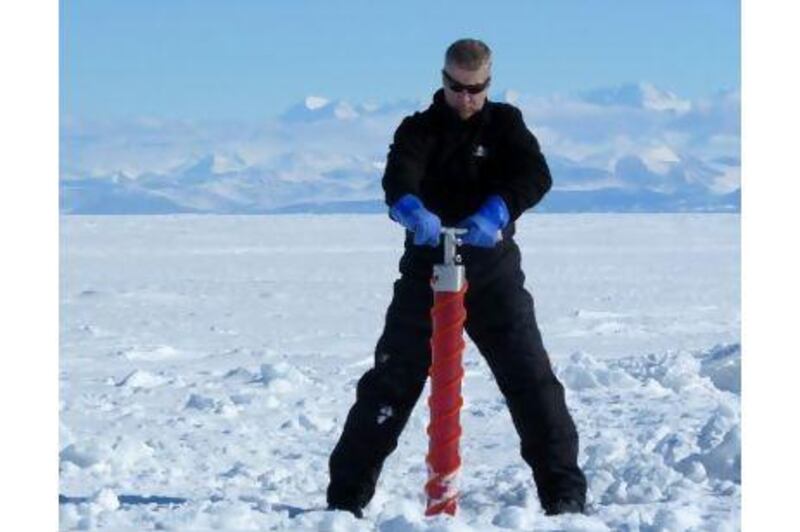DUBAI // Professor Kenneth Golden, just back from his sixth trip to the Antarctic, will explain in Abu Dhabi this week how math can track environmental changes, why ice is like human bone, and why those of us living in the desert should care.
The mathematics and bioengineering professor, who teaches at the University of Utah in the US, will give a free public lecture on the subject on Wednesday.
His work involves using basic laws of physics to express natural processes - the seasonal melting of thick ice over the polar ocean, for example - as mathematical equations.
The process is being used to make more accurate and precise predictions on climate change than computer models, which have been used to calculate how increasing amounts of greenhouse gases will impact life on the planet.
The computer models underestimated the degree of melting at the poles, Prof Golden said.
"Ice was melting much more rapidly than anyone would have predicted," he said.
In the Arctic, for example, there had been "a dramatic change in sea ice cover", he said.
Between 1980 and 2000, every summer, most of the Arctic ocean was covered by ice. But as temperatures increase, more and more is melting.
"In 2007, we reached a record minimum where the ice had reduced to 40 per cent from its long-time average," Prof Golden said.
There are two types of melting when it comes to ice and the sea. First, the melting of continental ice shelves on the poles can contribute to the rise of the sea level.
Rising sea levels threaten low-lying areas around the globe with beach erosion, coastal flooding and contamination of fresh-water supplies.
Second, the melting of sea ice will not directly change the sea level, but will contribute to the warming of the ocean. This, in turn, can also lead to melting of the large continental ice masses.
Prof Golden compares this process to a "runaway train" - once it starts it cannot be reversed.
Studying the pooled water on top of the sea ice can help scientists to monitor this process, and predict how quickly it is going to happen.
"The evolution of these melt ponds depends on how easy it is for water to flow through the ice," said Prof Golden.
Much of his intricate work involves studying changes in composite materials: those that combine two or more materials that do not dissolve or blend into each other.
Sea ice is one such material. Instead of merging with the crystalline structure, the salty water stays trapped among the layers of ice. The microstructure is similar to human bone, and even to the radar-absorbing composites used to build military planes.
Mathematical techniques used to study one can be carried over successfully to another, he said.
"We can use the same ideas to monitor osteoporosis," he said. "The mathematics does not care if it is sea ice or bone."
This is why, on his trips to the poles, Prof Golden measures the electromagnetic properties of the ice as well as its temperature, salinity and crystalline structure.
He has discovered that if the volume of the salt water is five per cent of the ice structure, the ice is impermeable to water. If water is unable to come on top of the ice, then melt ponds cannot form, and the ice cover will remain stable.
But as the volume of the salt water increases, water can move with increasing ease through the pathways in the ice.
Prof Golden said he is hoping that, as his studies continue, he will be able to calculate the movement of sea water in the ice with increasing precision - and generate more exact climate modelling overall.
The lecture, titled "Climate Change and the Mathematics of Sea Ice," is organised by the New York University Abu Dhabi Institute. It is scheduled to take place on January 19 at Al Mamoura Auditorium.





